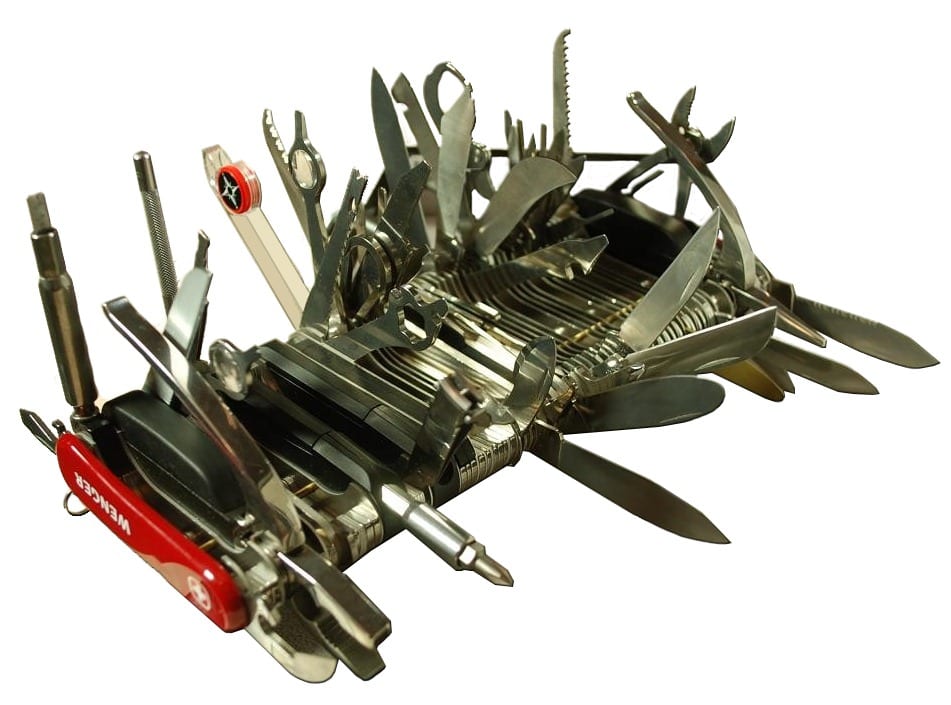What do Gmail and Slack have in common beyond being among the most loved and used apps in the world? Both were created with a focus on just three key features, which the companies sought to perfect beyond all. Paul Buchheit, who led the development of Gmail, famously wrote about his team focusing on just the ability to search, threaded conversations, and large storage. Similarly, Stewart Butterfield recounts how Slack’s big three features were the ability to search conversations, seamless synchronization, and simple file sharing. In this article, I’ll explain why focusing on just two or three key features is vital to building a meaningfully differentiated and valuable product.

Too often I speak with startup founders that go on and on about how their product has this feature and that, listing dozens of things that it does. In the end, I cannot discern what exactly makes their product special or different, and I’m quite certain that their customers or users won’t get it either. Rather than checking off boxes and cramming in features, innovators would be well served to carefully consider what are the one to three key things that would make your product clearly superior to other options. Paul Buccheit writes:
Pick three key attributes or features, get those things very, very right, and then forget about everything else. Those three attributes define the fundamental essence and value of the product — the rest is noise.
Paul Buchheit, If your product is Great, it doesn’t need to be Good.
Focusing on three or fewer key features will force you to make your product exceptional at solving the key challenges that you seek to address in the market rather than making yet another indistinguishable jumble of stuff that anyone can copy. Indeed, it’s usually just one or two qualities that make customers fall in love with your product, and it takes exceptional skill and hard work to perfect those details, which is a lot harder for competitors to copy.
How do you decide which features to focus on?
It’s often not clear what are the most important challenges that your product should solve or wants that it should satisfy. The process of figuring out where to focus, however, always starts with the end user or customer. Reflecting on the people that will be using your product, ask yourself or your team what are the challenges that frustrate them the most. For Gmail, this sort of reflection apparently led to the inability to easily search and find emails, always running out of space, and never being sure what was stated in previous emails that are related to the same conversation.
Another approach is to start with that long list of features that your team hopes to incorporate into the product and cross off the ones that aren’t absolutely vital. Starting with the obvious ones, keep crossing off features while asking yourself, “Is this feature absolutely vital for solving the most frustrating challenge for our customers?” Going back to the Gmail example, Buchheit and his team considered whether an address book was absolutely vital and decided that it wasn’t. He goes on to write:
By focusing on only a few core features in the first version, you are forced to find the true essence and value of the product. If your product needs “everything” in order to be good, then it’s probably not very innovative
Paul Buchheit, If your product is Great, it doesn’t need to be Good.
What to do with non-essential features
Whenever I push founders or engineers to focus on three or fewer key features, they often protest that all the features are critical to the product. That’s rarely true. As we saw above, there are only three truly crucial features, and others might be highly desired, but if you had to choose, which would you keep? Any feature that is not in the top three, can either be excluded altogether or implemented in the simplest and fastest way possible.
In Gmail’s case, there was no rich-text editor and the address book was archaic having been created in just two days. However, users were so delighted about the search, storage space, and threaded emails that they didn’t care or notice the other poorly executed features or even ones that were missing.
Prove your product is better then evolve
Your product’s goal is to do something special. Once the core value of what you and your team have built is clear, it’s time to shift gears and check off the list of secondary and tertiary features. There is definitely a honeymoon period when users will be so enamored with the key features that they will overlook other things that are imperfect or missing. However, that goodwill runs out after some time, and users will become more annoyed by those shortcomings. What’s most important in the long term is continuing to improve your core three features while filling in the gaps with everything else rather than forgetting about what made your product special to begin with. I’ll leave you with Stewart Butterfield’s thoughts on focusing on a few key features:
[When] it comes to a successful go-to-market strategy, perhaps the most important decision you can make is to build a product you believe is different from everything else out there, and an important change for the audience you’re going after.
Stewart Butterfield, 0 to $1B – Slack’s Founder Shares Their Epic Launch Strategy
I have created a simple worksheet to help you organize your thoughts around your three key features. See below.

